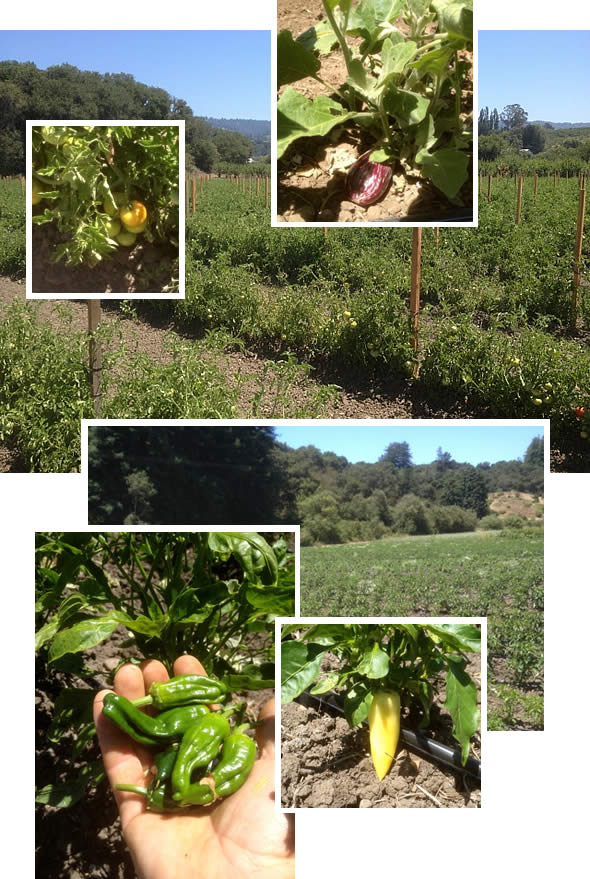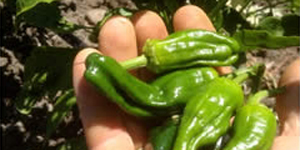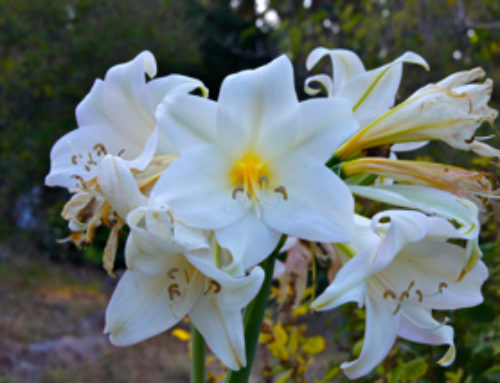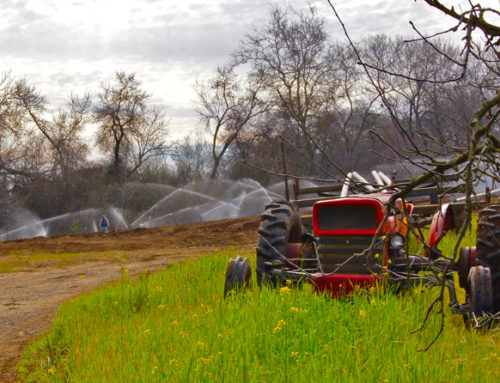We’ve reached that time of season when people get restless waiting for tomatoes, peppers and green beans. You see them in farmer’s markets, so why not in your shares? Next time you’re at a farmers market, note where the farms are located – those summer goodies are coming in from the warmer inland areas, not the coast, where we farm. As I’ve said many a time, farming and eating with the seasons is not an exact science; the ripeness and flavors of summer fruit and vegetables adhere more to mother nature’s capricious rhythms than to any date on a calendar. Yes I have heard the rumblings of “too many greens,” and “why so much kale?” (Of course I hear an equal number of rumblings from those who love having weekly greens.) Well if you aren’t a fan yet, kale has become the “queen of greens” displacing to some extend spinach (don’t worry, we are still growing spinach). Superior in nutrient richness, health benefits, and with a delicious flavor, kale is the new star. Many CSA members like it to be a staple in the shares, like carrots, and at the farmer’s markets it’s now on top of the greens “hit-list.”
As you can see from the field pictures I took recently, tomatoes, peppers, green beans, even the first eggplants are maturing, so you haven’t much longer to wait. I checked my notes: tomatoes are probably 3 weeks earlier than last year. This week we’ll start putting green beans in the shares; the sungold and dry-farmed tomatoes I predict will be in most shares in two weeks. Peppers will follow — first, the Sweet Yellow Hungarians, then the Padrons, followed by the thick-skinned red pimento peppers. One member discovered we had peppers at the farmer’s market, and as you know Taylor has been offering some through the webstore. The quantities are very limited, however, because they are the result of a small greenhouse planting we experimented with this year, to evaluate whether it’s feasible to grow peppers in the off-season (February through June). The cooler growing climate here definitely has its advantages, such as allowing us to grow both cool and heat-loving crops side by side (broccoli, arugula, and spinach next to peppers and tomatoes). But it also asks us to have patience in early summer. This patience pays off though: typically we are rewarded with a long frost-free growing season into late fall, so we often still have peppers, tomatoes, and green beans into early November.
 Iceberg lettuce has a bad reputation, many of us grew up with it and consider it unappealing and tasteless, serving no other purpose than as a carrier for rich creamy salad dressings. So last week I was asked why would even consider growing it. I wanted to experiment with though, because some members and market customers expressed an interest, and during a farm conference earlier in the year I spoke with a farmer who mentioned how popular it was among his members. So I tried it for the heck of it, and to compare it with our regular lettuce varieties. It turns out it is not well liked within our community of eaters, myself included. We only have two small plantings left in the field, so after they’re done I will discontinue it.
Iceberg lettuce has a bad reputation, many of us grew up with it and consider it unappealing and tasteless, serving no other purpose than as a carrier for rich creamy salad dressings. So last week I was asked why would even consider growing it. I wanted to experiment with though, because some members and market customers expressed an interest, and during a farm conference earlier in the year I spoke with a farmer who mentioned how popular it was among his members. So I tried it for the heck of it, and to compare it with our regular lettuce varieties. It turns out it is not well liked within our community of eaters, myself included. We only have two small plantings left in the field, so after they’re done I will discontinue it.
Another member inquiry was about the red carrots we put in last week’s shares. Like their purple cousins, they don’t match up in flavor and sweetness to the orange ones. They do, however, have a strong carrot-y taste, with a hint of bitterness. Again, these are new varieties we’ve been experimenting with and I am glad to get your feedback. I will grow colored carrots on a very limited scale, and mainly focus on the more popular orange varieties such as Mokum and Nelson.
A frequently asked question regarding the Extra Fruit Option is whether there will be fruit other than just strawberries. The answer is definitely yes. Last week we mixed it up with plums, apricots and caneberries (blackberries and raspberries). We will continue to do this as long as the other varieties last. Strawberries are a production staple, lasting most of the season; blackberries and raspberries are close runners-up in terms of production; stone fruits have the shortest season. (Then there are apples and pears… but that’s fall, and we’re not there yet.) Unfortunately there was only a very small apricot harvest this year due to poor fruit set caused by untimely spring rains right during the peak of bloom. We will be combining them with the plums. Plums had a better fruit set and so should last a little longer, and blackberries and raspberries are picking up again and will be a regular item in the fruit shares.
Eating with the seasons is not only a great way to learn the rhythm of crop cycles, but you also learn about crop growing practices and the challenges that go along with them; we learn to embrace the imperfections instead of expect picture-perfect aesthetics like those developed for supermarkets [often at a loss of flavor — see a very timely article from last week’s San Jose Mercury News, “Researchers reveal secret behind tasteless tomatoes” – Debbie]. Ultimately, eating what is grown on your local farm is a way to expand your horizons beyond grocery store fare — and experience how your food is produced in the process. If we see farms as an opportunity to establish a relationship with the people who grow our food, we can, I am convinced, directly improve the vitality of the place we live in, our personal health and that of our community.
– Tom





